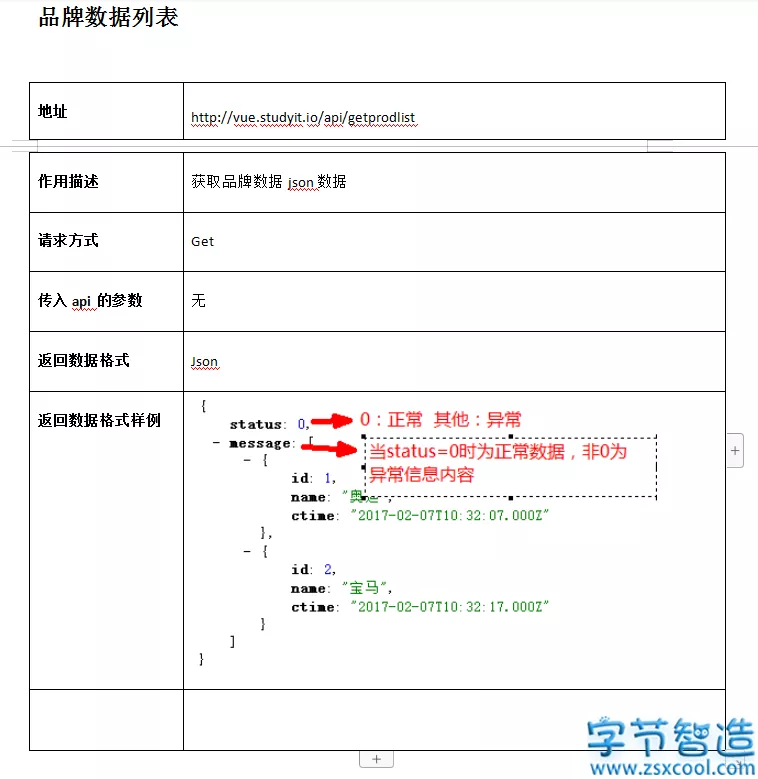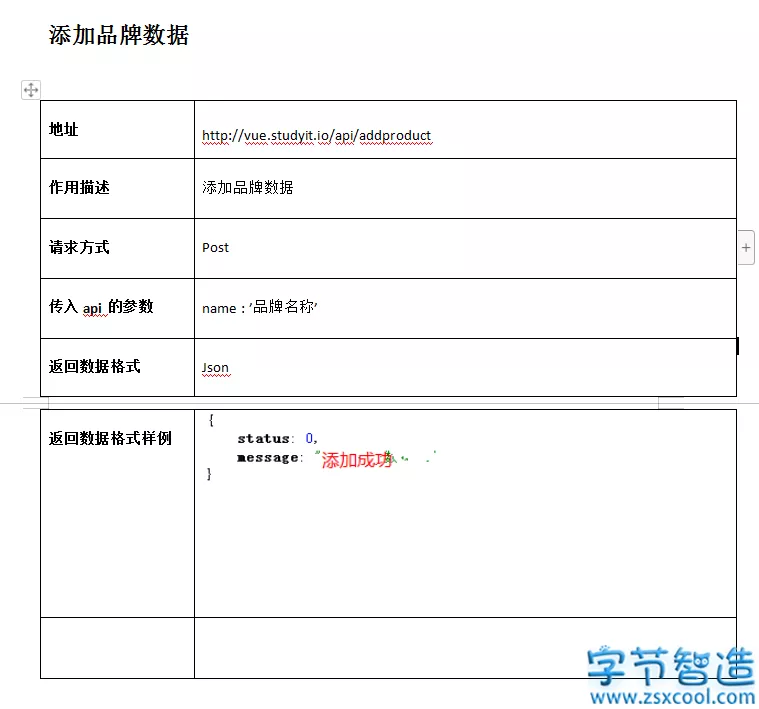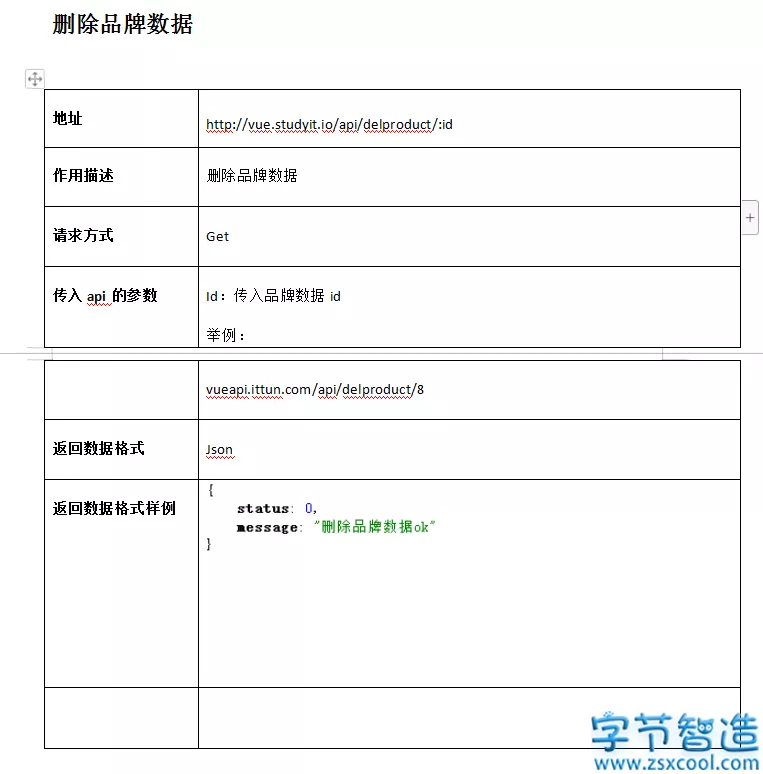vue-resource 实现 get, post, jsonp请求 (vue发送ajax请求)
除了 vue-resource 之外,还可以使用 axios 的第三方包实现实现数据的请求
- 之前的学习中,如何发起数据请求?jQuery
- 常见的数据请求类型? get post jsonp
- 测试的URL请求资源地址:
- get请求地址: http://vue.studyit.io/api/getlunbo
- post请求地址:http://vue.studyit.io/api/post
- jsonp请求地址:http://vue.studyit.io/api/jsonp
4.JSONP的实现原理
- 由于浏览器的安全性限制,不允许AJAX访问 协议不同、域名不同、端口号不同的 数据接口,浏览器认为这种访问不安全;
- 可以通过动态创建script标签的形式,把script标签的src属性,指向数据接口的地址,因为script标签不存在跨域限制,这种数据获取方式,称作JSONP(注意:根据JSONP的实现原理,知晓,JSONP只支持Get请求);
- 具体实现过程:
- 先在客户端定义一个回调方法,预定义对数据的操作;
- 再把这个回调方法的名称,通过URL传参的形式,提交到服务器的数据接口;
- 服务器数据接口组织好要发送给客户端的数据,再拿着客户端传递过来的回调方法名称,拼接出一个调用这个方法的字符串,发送给客户端去解析执行;
- 客户端拿到服务器返回的字符串之后,当作Script脚本去解析执行,这样就能够拿到JSONP的数据了;
- 带大家通过 Node.js ,来手动实现一个JSONP的请求例子;
const http = require('http');
// 导入解析 URL 地址的核心模块
const urlModule = require('url');
const server = http.createServer();
// 监听 服务器的 request 请求事件,处理每个请求
server.on('request', (req, res) => {
const url = req.url;
// 解析客户端请求的URL地址
var info = urlModule.parse(url, true);
// 如果请求的 URL 地址是 /getjsonp ,则表示要获取JSONP类型的数据
if (info.pathname === '/getjsonp') {
// 获取客户端指定的回调函数的名称
var cbName = info.query.callback;
// 手动拼接要返回给客户端的数据对象
var data = {
name: 'zs',
age: 22,
gender: '男',
hobby: ['吃饭', '睡觉', '运动']
}
// 拼接出一个方法的调用,在调用这个方法的时候,把要发送给客户端的数据,序列化为字符串,作为参数传递给这个调用的方法:
var result = `${cbName}(${JSON.stringify(data)})`;
// 将拼接好的方法的调用,返回给客户端去解析执行
res.end(result);
} else {
res.end('404');
}
});
server.listen(3000, () => {
console.log('server running at http://127.0.0.1:3000');
});5.vue-resource 的配置步骤:
- 直接在页面中,通过
script标签,引入vue-resource的脚本文件; - 注意:引用的先后顺序是:先引用
Vue的脚本文件,再引用vue-resource的脚本文件;
<!DOCTYPE html>
<html lang="en">
<head>
<meta charset="UTF-8">
<meta name="viewport" content="width=device-width, initial-scale=1.0">
<meta http-equiv="X-UA-Compatible" content="ie=edge">
<title>Document</title>
<script src="./lib/vue-2.4.0.js"></script>
<!-- 注意:vue-resource 依赖于 Vue,所以先后顺序要注意 -->
<!-- this.$http.jsonp -->
<script src="./lib/vue-resource-1.3.4.js"></script>
</head>
<body>
<div id="app">
<input type="button" value="get请求" @click="getInfo">
<input type="button" value="post请求" @click="postInfo">
<input type="button" value="jsonp请求" @click="jsonpInfo">
</div>
<script>
// 创建 Vue 实例,得到 ViewModel
var vm = new Vue({
el: '#app',
data: {},
methods: {
getInfo() { // 发起get请求
// 参数1: 要请求的URL地址
// 参数2: 要发送的数据对象 更多参考文档 https://github.com/pagekit/vue-resource
// 当发起get请求之后, 通过 .then 来设置成功的回调函数
this.$http.get('http://vue.studyit.io/api/getlunbo').then(function (result) {
// 通过 result.body 拿到服务器返回的成功的数据
// console.log(result.body)
})
},
postInfo() { // 发起 post 请求 application/x-wwww-form-urlencoded
// 手动发起的 Post 请求,默认没有表单格式,所以,有的服务器处理不了
// 通过 post 方法的第三个参数, { emulateJSON: true } 设置 提交的内容类型 为 普通表单数据格式
// 参数1: 要请求的URL地址
// 参数2: 要发送的数据对象
// 参数3: 指定post提交的编码类型为 application/x-www-form-urlencoded 更多参考文档 https://github.com/pagekit/vue-resource
this.$http.post('http://vue.studyit.io/api/post', {}, { emulateJSON: true }).then(result => {
console.log(result.body)
})
},
jsonpInfo() { // 发起JSONP 请求
// 参数1: 要请求的URL地址
// 参数2: 要发送的数据对象 更多参考文档 https://github.com/pagekit/vue-resource
this.$http.jsonp('http://vue.studyit.io/api/jsonp').then(result => {
console.log(result.body)
})
}
}
});
</script>
</body>
</html>使用vue-resource 完成品牌管理案例
展示品牌列表
品牌数据列表接口文档
代码实现
<!DOCTYPE html>
<html lang="en">
<head>
<meta charset="UTF-8">
<meta name="viewport" content="width=device-width, initial-scale=1.0">
<meta http-equiv="X-UA-Compatible" content="ie=edge">
<title>Document</title>
<script src="./lib/vue-2.4.0.js"></script>
<script src="./lib/vue-resource-1.3.4.js"></script>
<link rel="stylesheet" href="./lib/bootstrap-3.3.7.css" rel="nofollow noopener" rel="nofollow noopener" rel="nofollow noopener" rel="nofollow noopener" >
</head>
<body>
<div id="app">
<div class="panel panel-primary">
<div class="panel-heading">
<h3 class="panel-title">添加品牌</h3>
</div>
<div class="panel-body form-inline">
<label>
Name:
<input type="text" v-model="name" class="form-control">
</label>
<input type="button" value="添加" @click="add" class="btn btn-primary">
</div>
</div>
<table class="table table-bordered table-hover table-striped">
<thead>
<tr>
<th>Id</th>
<th>Name</th>
<th>Ctime</th>
<th>Operation</th>
</tr>
</thead>
<tbody>
<tr v-for="item in list" :key="item.id">
<td>{{item.id}}</td>
<td>{{item.name}}</td>
<td>{{item.ctime}}</td>
<td>
<a href="" rel="nofollow noopener" rel="nofollow noopener" rel="nofollow noopener" rel="nofollow noopener" @click.prevent="del(item.id)">删除</a>
</td>
</tr>
</tbody>
</table>
</div>
<script>
// 如果我们通过全局配置了,请求的数据接口 根域名,则 ,在每次单独发起 http 请求的时候,请求的 url 路径,应该以相对路径开头,前面不能带 / ,否则 不会启用根路径做拼接;
Vue.http.options.root = 'http://vue.studyit.io/';
// 全局启用 emulateJSON 选项
Vue.http.options.emulateJSON = true;
// 创建 Vue 实例,得到 ViewModel
var vm = new Vue({
el: '#app',
data: {
name: '',
list: [ // 存放所有品牌列表的数组
]
},
created() { // 当 vm 实例 的 data 和 methods 初始化完毕后,vm实例会自动执行created 这个生命周期函数
this.getAllList()
},
methods: {
getAllList() { // 获取所有的品牌列表
// 分析:
// 1. 由于已经导入了 Vue-resource这个包,所以 ,可以直接通过 this.$http 来发起数据请求
// 2. 根据接口API文档,知道,获取列表的时候,应该发起一个 get 请求
// 3. this.$http.get('url').then(function(result){})
// 4. 当通过 then 指定回调函数之后,在回调函数中,可以拿到数据服务器返回的 result
// 5. 先判断 result.status 是否等于0,如果等于0,就成功了,可以 把 result.message 赋值给 this.list ; 如果不等于0,可以弹框提醒,获取数据失败!
this.$http.get('api/getprodlist').then(result => {
// 注意: 通过 $http 获取到的数据,都在 result.body 中放着
var result = result.body
if (result.status === 0) {
// 成功了
this.list = result.message
} else {
// 失败了
alert('获取数据失败!')
}
})
},}
});
</script>
</body>
</html>添加品牌数据
添加品牌数据接口文档
代码实现
<!DOCTYPE html>
<html lang="en">
<head>
<meta charset="UTF-8">
<meta name="viewport" content="width=device-width, initial-scale=1.0">
<meta http-equiv="X-UA-Compatible" content="ie=edge">
<title>Document</title>
<script src="./lib/vue-2.4.0.js"></script>
<script src="./lib/vue-resource-1.3.4.js"></script>
<link rel="stylesheet" href="./lib/bootstrap-3.3.7.css" rel="nofollow noopener" rel="nofollow noopener" rel="nofollow noopener" rel="nofollow noopener" >
</head>
<body>
<div id="app">
<div class="panel panel-primary">
<div class="panel-heading">
<h3 class="panel-title">添加品牌</h3>
</div>
<div class="panel-body form-inline">
<label>
Name:
<input type="text" v-model="name" class="form-control">
</label>
<input type="button" value="添加" @click="add" class="btn btn-primary">
</div>
</div>
<table class="table table-bordered table-hover table-striped">
<thead>
<tr>
<th>Id</th>
<th>Name</th>
<th>Ctime</th>
<th>Operation</th>
</tr>
</thead>
<tbody>
<tr v-for="item in list" :key="item.id">
<td>{{item.id}}</td>
<td>{{item.name}}</td>
<td>{{item.ctime}}</td>
<td>
<a href="" rel="nofollow noopener" rel="nofollow noopener" rel="nofollow noopener" rel="nofollow noopener" @click.prevent="del(item.id)">删除</a>
</td>
</tr>
</tbody>
</table>
</div>
<script>
// 如果我们通过全局配置了,请求的数据接口 根域名,则 ,在每次单独发起 http 请求的时候,请求的 url 路径,应该以相对路径开头,前面不能带 / ,否则 不会启用根路径做拼接;
Vue.http.options.root = 'http://vue.studyit.io/';
// 全局启用 emulateJSON 选项
Vue.http.options.emulateJSON = true;
// 创建 Vue 实例,得到 ViewModel
var vm = new Vue({
el: '#app',
data: {
name: '',
list: [ // 存放所有品牌列表的数组
]
},
created() { // 当 vm 实例 的 data 和 methods 初始化完毕后,vm实例会自动执行created 这个生命周期函数
this.getAllList()
},
methods: {
getAllList() { // 获取所有的品牌列表 },
add() { // 添加品牌列表到后台服务器
// 分析:
// 1. 听过查看 数据API接口,发现,要发送一个 Post 请求, this.$http.post
// 2. this.$http.post() 中接收三个参数:
// 2.1 第一个参数: 要请求的URL地址
// 2.2 第二个参数: 要提交给服务器的数据 ,要以对象形式提交给服务器 { name: this.name }
// 3.3 第三个参数: 是一个配置对象,要以哪种表单数据类型提交过去, { emulateJSON: true }, 以普通表单格式,将数据提交给服务器 application/x-www-form-urlencoded
// 3. 在 post 方法中,使用 .then 来设置成功的回调函数,如果想要拿到成功的结果,需要 result.body
/* this.$http.post('api/addproduct', { name: this.name }, { emulateJSON: true }).then(result => {
if (result.body.status === 0) {
// 成功了!
// 添加完成后,只需要手动,再调用一下 getAllList 就能刷新品牌列表了
this.getAllList()
// 清空 name
this.name = ''
} else {
// 失败了
alert('添加失败!')
}
}) */
this.$http.post('api/addproduct', { name: this.name }).then(result => {
if (result.body.status === 0) {
// 成功了!
// 添加完成后,只需要手动,再调用一下 getAllList 就能刷新品牌列表了
this.getAllList()
// 清空 name
this.name = ''
} else {
// 失败了
alert('添加失败!')
}
})
}
}
});
</script>
</body>
</html>删除品牌数据
删除品牌数据接口文档
代码实现
<!DOCTYPE html>
<html lang="en">
<head>
<meta charset="UTF-8">
<meta name="viewport" content="width=device-width, initial-scale=1.0">
<meta http-equiv="X-UA-Compatible" content="ie=edge">
<title>Document</title>
<script src="./lib/vue-2.4.0.js"></script>
<script src="./lib/vue-resource-1.3.4.js"></script>
<link rel="stylesheet" href="./lib/bootstrap-3.3.7.css" rel="nofollow noopener" rel="nofollow noopener" rel="nofollow noopener" rel="nofollow noopener" >
</head>
<body>
<div id="app">
<div class="panel panel-primary">
<div class="panel-heading">
<h3 class="panel-title">添加品牌</h3>
</div>
<div class="panel-body form-inline">
<label>
Name:
<input type="text" v-model="name" class="form-control">
</label>
<input type="button" value="添加" @click="add" class="btn btn-primary">
</div>
</div>
<table class="table table-bordered table-hover table-striped">
<thead>
<tr>
<th>Id</th>
<th>Name</th>
<th>Ctime</th>
<th>Operation</th>
</tr>
</thead>
<tbody>
<tr v-for="item in list" :key="item.id">
<td>{{item.id}}</td>
<td>{{item.name}}</td>
<td>{{item.ctime}}</td>
<td>
<a href="" rel="nofollow noopener" rel="nofollow noopener" rel="nofollow noopener" rel="nofollow noopener" @click.prevent="del(item.id)">删除</a>
</td>
</tr>
</tbody>
</table>
</div>
<script>
// 如果我们通过全局配置了,请求的数据接口 根域名,则 ,在每次单独发起 http 请求的时候,请求的 url 路径,应该以相对路径开头,前面不能带 / ,否则 不会启用根路径做拼接;
Vue.http.options.root = 'http://vue.studyit.io/';
// 全局启用 emulateJSON 选项
Vue.http.options.emulateJSON = true;
// 创建 Vue 实例,得到 ViewModel
var vm = new Vue({
el: '#app',
data: {
name: '',
list: [ // 存放所有品牌列表的数组
]
},
created() { // 当 vm 实例 的 data 和 methods 初始化完毕后,vm实例会自动执行created 这个生命周期函数
this.getAllList()
},
methods: {
getAllList() { // 获取所有的品牌列表 },
add() { // 添加品牌列表到后台服务器 },
del(id) { // 删除品牌
this.$http.get('api/delproduct/' + id).then(result => {
if (result.body.status === 0) {
// 删除成功
this.getAllList()
} else {
alert('删除失败!')
}
})
}
}
});
</script>
</body>
</html>


